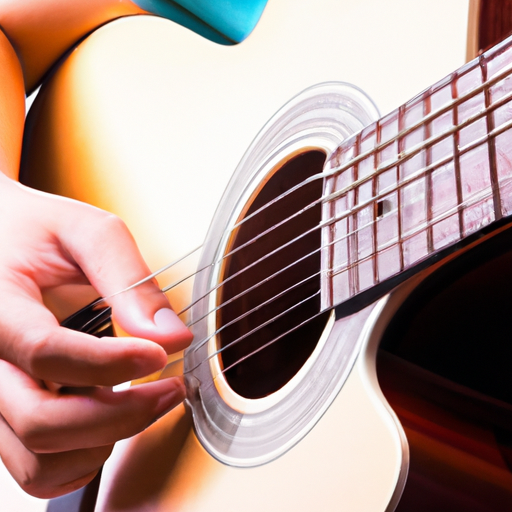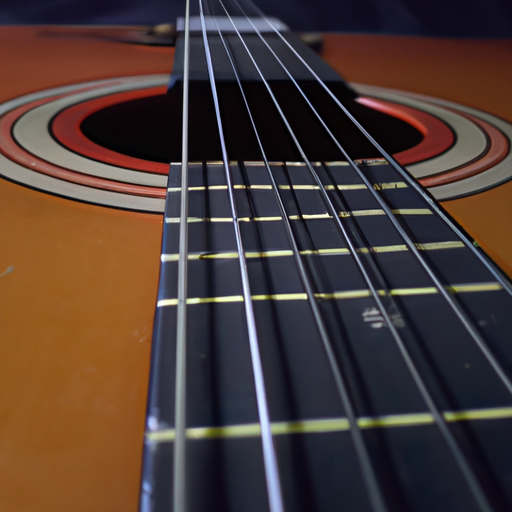
Choosing the right guitar is crucial for any musician, whether you're a beginner or an experienced player. The right guitar can greatly enhance your playing experience and help you achieve your musical goals. In this article, we will explore the different factors to consider when choosing a guitar and provide you with helpful tips to make an informed decision.

There are various types of guitars available, each with its own unique characteristics and sound. Here are the main types:

Acoustic guitars are known for their rich, warm tones and versatility. They are suitable for various genres and playing styles. Acoustic guitars have a hollow body and produce sound through the vibration of the strings.
Electric guitars are popular in rock, blues, and metal genres. They have a solid body and require an amplifier to produce sound. Electric guitars offer a wide range of tones and are often favored by lead guitarists.
Classical guitars are commonly used in classical music and flamenco. They have nylon strings and a wide neck, which makes them suitable for fingerpicking and intricate playing techniques.
Bass guitars are essential for any band or ensemble. They provide the low-end foundation and rhythm. Bass guitars have thicker strings and a longer scale length compared to regular guitars.
When choosing a guitar, consider the genre and style of music you want to play. Each type of guitar has its own sound and characteristics that may suit different musical preferences.
Setting a budget is essential when buying a guitar. Guitars can vary greatly in price, and it's important to find a balance between quality and affordability. Here are some pros and cons of different price ranges:
Determine how much you are willing to spend on a guitar. This will help narrow down your options and prevent overspending.
Low-budget guitars are often more affordable, but they may lack in quality and durability. Mid-range guitars offer better build quality and sound, while high-end guitars are crafted with premium materials and provide superior tone.
Low-budget guitars are suitable for beginners and casual players. Mid-range guitars are ideal for intermediate players who want to upgrade their instrument. High-end guitars are designed for professional musicians and serious enthusiasts.
Matching the guitar to your skill level is crucial for your progress as a musician. Here are the different types of guitars for each skill level:
Beginner guitars are designed with ease of playability in mind. They have a comfortable neck profile and lower action, making it easier for beginners to press down on the strings.
Intermediate guitars offer better build quality and sound compared to beginner guitars. They are suitable for players who have mastered the basics and are ready to explore more advanced playing techniques.
Advanced guitars are crafted with premium materials and provide exceptional tone and playability. They are designed for professional musicians and experienced players who demand the highest quality instrument.
Choosing a guitar that matches your skill level will enhance your playing experience and help you grow as a musician. It's important to choose a guitar that challenges you without being too overwhelming.
The body shape and size of a guitar can greatly affect its playability and comfort. Here are some factors to consider when selecting a body shape:
There are various body shapes available, such as dreadnought, concert, and jumbo. Each shape has its own sound projection and tonal characteristics.
Choosing the right size guitar is important, especially for beginners and players with smaller hands. Consider factors such as scale length and body depth when selecting the size.
Factors to consider when selecting a body shape include playing style, comfort, and sound preference. Experiment with different body shapes to find the one that suits your needs.
Tonewoods play a significant role in the sound and tone of a guitar. Here's a breakdown of popular tonewoods and their characteristics:
Tonewoods refer to the type of wood used for the guitar's top, back, sides, and neck. Each type of wood has its own unique tonal properties.
Popular tonewoods include spruce, cedar, mahogany, rosewood, and maple. Spruce is known for its bright and versatile tone, while cedar offers a warmer and more balanced sound. Mahogany provides a rich and warm tone, while rosewood enhances the guitar's sustain and overtones. Maple offers a bright and articulate tone.
Tonewoods affect the overall tonal characteristics of a guitar. Different tonewoods can emphasize certain frequencies, resulting in variations in tone, sustain, and resonance.
The neck shape and size of a guitar can greatly impact playability and comfort. Here's an overview of neck shapes:
Neck shapes can range from C-shaped to V-shaped. Each shape provides a different feel and grip, catering to different playing styles.
Choosing the right neck size is important, especially for players with smaller or larger hands. Consider factors such as neck width and thickness when selecting the size.
Factors to consider when selecting a neck shape include playing style, hand size, and comfort. Experiment with different neck shapes to find the one that feels comfortable and facilitates your playing technique.
Guitar hardware and electronics play a crucial role in the guitar's sound and functionality. Here's an overview:
Guitar hardware includes components such as tuners, bridges, and tailpieces. Electronics refer to pickups and control knobs.
There are various types of pickups, including single-coil and humbucker pickups. Single-coil pickups offer a bright and clear tone, while humbuckers provide a thicker and fuller sound.
Other hardware considerations include the quality of the tuners, bridge, and nut. These components can affect the guitar's tuning stability and overall playability.
Choosing a reputable guitar brand can ensure the quality and reliability of your instrument. Here's an overview:
Popular guitar brands include Fender, Gibson, Martin, Taylor, and Yamaha. Each brand has its own unique offerings and reputation.
Research the reputation and history of different brands to understand their craftsmanship, quality control, and customer satisfaction. Read reviews and seek recommendations from experienced players.
Choose a brand that aligns with your musical preferences, budget, and needs. Consider factors such as sound, playability, and overall craftsmanship.
In conclusion, choosing the perfect guitar requires careful consideration of various factors such as type, budget, skill level, body shape and size, tonewoods, neck shape and size, hardware and electronics, and brand reputation. By understanding your musical goals and preferences, you can find a guitar that enhances your playing experience and brings you closer to your musical aspirations.
When it comes to finding the perfect guitar, consider visiting chothuebannhac.net for a wide selection of high-quality guitars suitable for all skill levels and musical preferences.